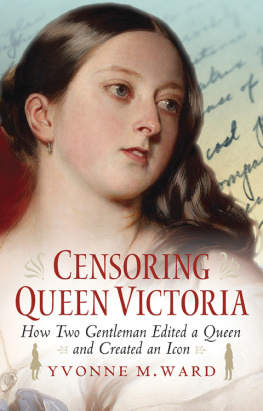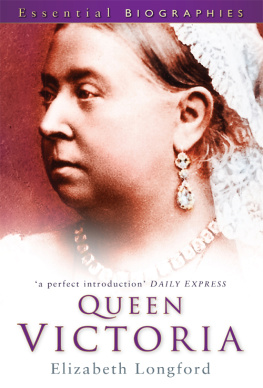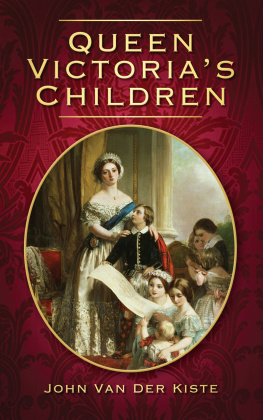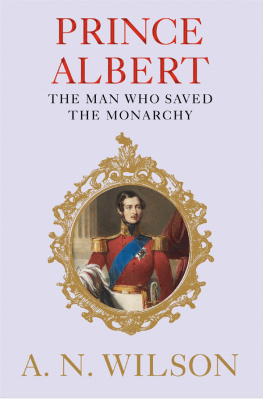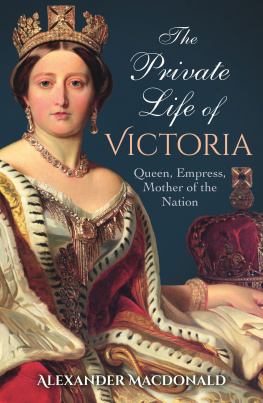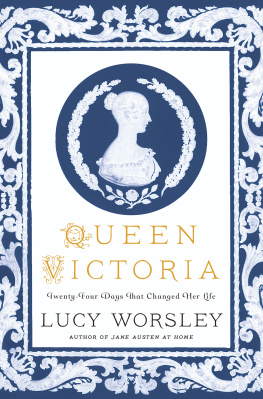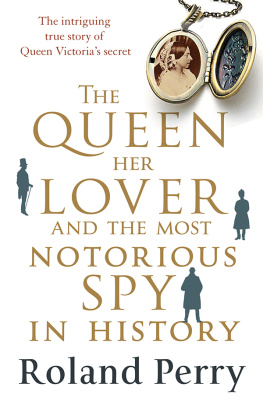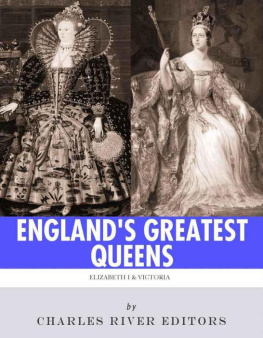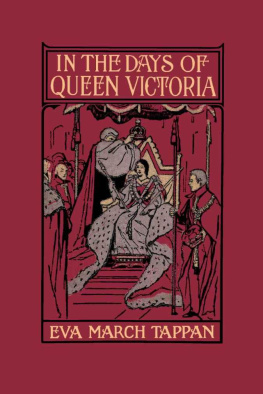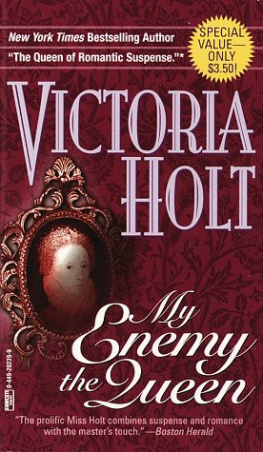A CKNOWLEDGMENTS
The completion of this book is the result of assistance and support from all of the people who helped with my PhD, the staff at Black Inc., especially Chris Feik and my very perceptive editor, Denise ODea, and John Hirst. Not only was he persistent in convincing me that the thesis should be published but he did the initial abridgement to persuade Chris Feik as well. Without his efforts the book would have remained in the thesis.
I am very grateful to friends for their help, their friendship, hospitality and sustenance, and for sharing the joys of the research: Walter and Charlotte Arnstein, Ingrid Barker, Lady de Bellaigue, Janet Butler, Liz and Richard Coyle, Liz Dimock, Graham Fairhurst, Carole Hamilton-Barwick, Tim Healey, Dr Gustaaf Janssens, Sue Knowles, Robert Lacey, Margaret Lee, Evelyn Maynard, Lee-Ann Monk, John and Virginia Murray, Keith and Joyce Pescod, Ann and Mike Reece, Sue and Bob Sutton, and Monika Wingrove.
To my first teachers: Mum and Dad, Leah and John Ward; and my brothers and sisters, Graeme, Leah, Ian, Rhonda and Steven, their partners and children.
To our two little grandsons, Mason and Hayden, my new teachers.
To my husband, Roy, and our children, Roy, Leah, Phillip and Allison, who all suffered various degrees of deprivation during my PhD. I hope you will all share in the satisfaction of seeing the book published.
Chapter 1
T O P UBLISH THE Q UEENS L ETTERS
O N V ICTORIAS DEATH IN 1901, Reginald Brett, the second Lord Esher, was charged with organising her funeral and the coronation of her eldest son, Edward VII. These tasks fell to him not because of the official position he held at court, which was minor; he was merely the Secretary of the Office of Works. But Esher had developed a reputation at court and in political circles: if a job had to be done well or if judicious advice was needed, Esher was your man. He was, , a person of wide and considerable influence, an advantage he maintained by refusing all offers of higher office. At various times he declined to be ambassador to Paris, the governor of the Cape (in South Africa) and the viceroy of India. He had been briefly an MP but refused to return to politics, even though he was twice offered a position in the Cabinet. He explained to his son:
tie would be. I am purely selfish in the matter, and really I do not think I can bring myself to sacrifice all independence, all liberty of action, all my intime life for a position which adds nothing to that which I now occupy.
As the historian William Kuhn notes, would hardly have borne the inspection of his friends, let alone the public. He was tempted by the offer of the governorship of the Cape, but eventually declined, recording in his journal, Were it not for Maurice I would go at once. As it is, I cannot. Maurice was his son, with whom he was infatuated.
.
Esher was opposed, however, to the production of an official biography of the Queen:
Such a task is impossible during the lifetime of certain persons and until the shadow of passing events grows longer. Justice could not be done to the Queens character, unless her later years were thrown into strong relief, for it was during her later years that her judgement mellowed, and her influence over her people and over the Empire became so powerful.
, totally novel: to publish the Queens correspondence. There have since been published volumes of the letters of various monarchs. But this was to be the first such collection, and it was to appear immediately after the demise of the royal letter-writer. Pondering the task, Esher recorded in his journal that the only possible thing to do was to (1) collect and arrange all her papers, (2) print selections from her journals up to a certain date, (3) print correspondence very fully up to a certain date. The main purpose as he saw it at this stage was pour servir the historians of the future. This he believed would be far more interesting than any expurgated biography. Indeed, the truest service to the Queen is to let her speak for herself.
At this early stage he had some idea how prolific a correspondent the Queen had been. His plan was to publish her correspondence up to 1861, the year of Alberts death. To publish the correspondence very fully even for this comparatively short period was to prove impossible, however. novelist, her complete works would have run into seven hundred volumes, published at the rate of one per month!
Unique among British monarchs, Victoria had published edited extracts from her journals while she was on the throne. (In recognition of this, Disraeli, who himself was unusual in combining the positions of politician and novelist, flatteringly addressed her as We authors, mam ) Leaves from the Journal of Our Life in the Highlands (1868) was an instant success, selling twenty thousand copies and spawning several subsequent editions and a sequel in 1884. Letters between Victoria and the Dean of Windsor, Randall Davidson (later the Archbishop of Canterbury), show that the Queen had also wanted to publish a memorial to her highland servant, John Brown, following his death in 1883, but was persuaded to forego the project. In a masterfully subtle letter, Davidson outlined the likely public response to such a panegyric, noting that I should be deceiving Your Majesty were I not to admit that there are, especially among the humbler classes, some (perhaps it would be true to say many) who do not shew themselves worthy of these confidences The Queens children had never liked even the most innocuous confidences of the Highland Journals being made public, so were relieved when the Queen was persuaded by the Dean.
proceeded in this way for thirty years, filling 111 copybooks. These are held at the Royal Archives in the Round Tower of Windsor Castle and are now available online. King George V (Victorias grandson) and Queen Mary tried to stop the destruction of the originals, but failed. The journal exists in its original form only until February 1840, although some later entries had appeared with the Queens permission in the authorised five-volume biography of Prince Albert, published between 1875 and 1880.
Immediately after the Queens death, Esher kept his plan to publish a selection of her letters secret. As a consummate political operator, he knew he would have to clear the ground, quite a lot of ground, to ensure there was no opposition from Princess Beatrice, Victorias other children, the King or his senior courtiers. Esher needed to establish his credibility with each of them personally and within the court. He waited more than two years before he broached the subject with the King.
Within weeks of the Queens death, however, he began to lay the foundations. Possibly after being given access to her papers in order to clarify matters of protocol for her funeral and the coronation, Esher observed that they were not well kept after the Prince Consorts death. This was, he thought, due to the Queens insistence on relying only on Prince Alberts German secretary, Maurice Mther, and on a cataloguing system, instituted by the Prince, that was incapable of dealing with the avalanche of papers over Victorias long reign. At the end of April 1901 Esher recorded that he had, at last, had an opportunity to speak to the King about arranging the Queens papers in a more orderly fashion.
The extent of Eshers access at this point is unclear, but he seems to have been rankling under restrictions. He expressed his frustration in his typically gentlemanly manner: The King will possibly become less tenacious and secret as time goes on. It is impossible to avoid trusting a private secretary if a man, King or subject, wishes to be well served.
The King was soon won over. During the months following Victorias death, Esher quickly became a key figure in the domestic life of the royal family. In March he recorded that he had spent most days with King Edward and Queen Alexandra most intimately, fussing about their private affairs. Much of the next two years were taken up with such arrangements. Between these duties and his role on the Memorial Committee, Esher was kept very busy and in the process made himself the obvious man for the job of sorting the Queens papers.

